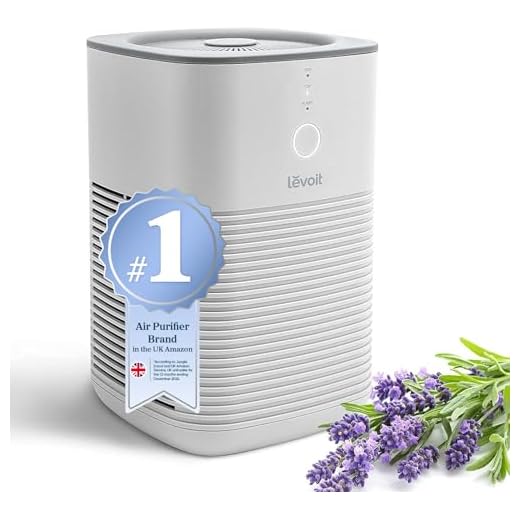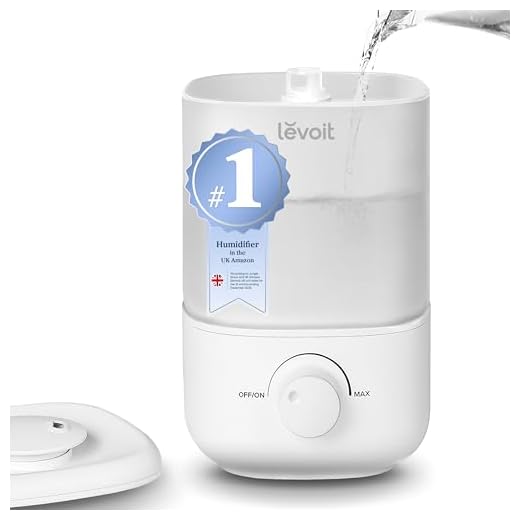




Using aromatic devices in your home can enhance the atmosphere, but caution is necessary when pets are involved. Some common essential oils, often found in these devices, can pose risks to our furry friends. For instance, oils like tea tree, citrus, and cinnamon are known to be harmful to canines. It’s advisable to research the specific ingredients in any fragrance products you consider using, ensuring they are safe for your pet.
From my experience with my own dog, I realised that even subtle scents can affect their behaviour. I once diffused a lavender oil blend, thinking it would create a calming environment. Instead, my dog became restless and anxious, which led me to further investigate the potential effects of various aromas. It’s important to observe how your pet reacts to different scents and to err on the side of caution.
Creating a safe environment means being proactive. Always opt for pet-friendly alternatives or consult with your veterinarian before introducing any new scents into your home. This way, you can enjoy a pleasant atmosphere without compromising the well-being of your beloved companion.
Safety of Aromatherapy Devices for Canines
Using aromatherapy devices in a home with pets requires careful consideration. Some essential oils can be harmful to our furry companions. For instance, oils like tea tree, eucalyptus, and citrus can cause adverse reactions in animals. If you decide to use these devices, ensure the area is well-ventilated, and consider placing the unit out of reach from your pet.
Monitor your animal’s behaviour closely. Symptoms such as drooling, vomiting, or lethargy may indicate an adverse reaction. If you notice any unusual behaviour, it’s crucial to consult a veterinarian immediately. Opt for pet-safe oils like lavender or chamomile, which are generally considered safer when used in moderation.
When introducing any new scent into your environment, do so gradually. This allows your pet to acclimatise without overwhelming their senses. Always provide a space for your pet to retreat if they feel uncomfortable. It’s better to err on the side of caution and prioritise your pet’s health and well-being.
Understanding the Ingredients in Essential Oils
Choosing safe products is paramount when it comes to our furry friends. Many individuals don’t realise that the components in some oils can be harmful. Always check the label for ingredients like phenols, which can be irritating or harmful. Natural does not always mean safe.
Common Ingredients to Watch For
| Ingredient | Potential Effects |
|---|---|
| Tea Tree Oil | Causes skin irritation, lethargy, and tremors. |
| Citrus Oils | Can lead to vomiting and depression of the central nervous system. |
| Peppermint Oil | May cause gastrointestinal upset and difficulty breathing. |
| Wintergreen Oil | Highly toxic; can affect the liver. |
Safe Alternatives
There are several oils that are regarded as safer options. Lavender and chamomile oils, for example, are often considered less harmful. However, even these should be used sparingly and monitored closely. Always consult a veterinarian before introducing any new substances into your dog’s environment.
For a balanced diet that supports overall health, consider options like the best dog food with brown rice. It ensures your dog gets essential nutrients without risking exposure to harmful ingredients.
Common Essential Oils Harmful to Canines
Certain botanical extracts can pose significant health risks to canines. Among the most hazardous are oils like tea tree, which can lead to severe neurological symptoms even in small amounts. Symptoms may include lethargy, tremors, and even collapse.
Pennyroyal oil is another to steer clear of. This oil can cause liver damage and gastrointestinal distress. Affected animals may show signs of vomiting, diarrhea, or lethargy. It’s crucial to keep any products containing this oil out of reach.
Wintergreen oil contains methyl salicylate, which can be harmful in both ingestion and inhalation. If your furry friend exhibits signs like difficulty breathing or excessive drooling, seek veterinary assistance immediately.
Cinnamon oil can irritate the skin and gastrointestinal tract. It’s best to avoid using this oil around your pet, as it can lead to discomfort or allergic reactions.
Clove oil is also on the list of harmful substances. It can cause liver toxicity and should never be used in a household with animals. Signs of exposure may include vomiting, diarrhea, and lethargy.
Always consult with a veterinarian before using any new oils in your home, especially if you share your space with a canine companion. Knowing which extracts to avoid can help ensure a safer environment for your furry friend.
Signs of Essential Oil Poisoning in Dogs
If you suspect that your furry companion may have ingested or been exposed to harmful oils, watch for these specific symptoms:
- Excessive drooling: A noticeable increase in saliva production can indicate distress.
- Vomiting: Look out for repeated instances of throwing up, which may signal gastrointestinal upset.
- Diarrhoea: Loose stools may also occur, indicating digestive issues.
- Lethargy: Unusual tiredness or lack of energy can be a red flag.
- Tremors: Shaking or twitching may indicate neurological distress.
- Difficulty breathing: Watch for laboured or rapid breathing, which requires immediate attention.
- Skin irritation: Redness or swelling on the skin can occur if the oil has come into contact with the fur or skin.
In case of any of these signs, it’s crucial to contact your veterinarian without delay. Early intervention can make a significant difference in recovery.
Additionally, maintaining a safe environment is key. Always read labels carefully and ensure that any aromatic products are out of reach. For tips on cleaning other items in your home, check out how to clean mushrooms for cooking.
Safe Alternatives for Canine Companions
Switching to non-aromatic methods can create a pleasant atmosphere without risking your furry friend’s health. Consider using natural air purifiers like activated charcoal or baking soda. Both options effectively absorb odours without introducing harmful scents.
Another great choice is using a simmer pot. Combine water with herbs such as rosemary, mint, or lavender in a pot on the stove. The gentle heat releases a mild fragrance that’s safe for your pet, enhancing your home environment without any risks.
For those who enjoy a soothing ambiance, try using a humidifier with plain water or adding safe herbs to the water. This method helps maintain humidity levels while providing a subtle, fresh aroma without any harmful effects.
Fresh flowers can also brighten your space while being safe for your canine buddy. Choose non-toxic varieties like roses or sunflowers, avoiding those that are harmful. Always double-check before bringing any new blooms into your home.
For a calming vibe, consider incorporating calming music or white noise machines. Many pets respond positively to soothing sounds, which can help reduce anxiety without any risk associated with fragrant oils.
Lastly, regular grooming and cleaning can greatly reduce odour while keeping your companion happy and healthy. Bathing your dog with gentle, pet-safe shampoos and maintaining a tidy living space can make a significant difference in your home’s scent profile.
How to Use Diffusers Safely Around Dogs
Always place your aromatic device in a well-ventilated area. This helps ensure that your furry friend can move away from any scents they might find overwhelming. Keep it out of reach to prevent any accidental ingestion of oils or components.
Opt for water-based methods instead of oil-based. Water vapour can provide a pleasant atmosphere without the risks associated with concentrated oils. Additionally, using a less potent mix can be gentler on your pet’s sensitive nose.
Monitor your canine companion closely for any signs of discomfort. If they exhibit unusual behaviour, such as excessive drooling, sneezing, or lethargy, discontinue use immediately. It’s better to be cautious than to risk your pet’s well-being.
Consider using only pet-safe fragrances. Some blends are specifically designed to be safe for animals. Always check labels for warnings regarding pet exposure before trying any new scent.
Limit the duration of exposure. Short intervals are less likely to cause adverse reactions. Start with just a few minutes and gradually increase the time if your pet seems comfortable.
Invest in a quality air purifier. This will not only help maintain a fresh environment but also reduce any lingering scents that could affect your furry friend.
Lastly, consult your veterinarian if you’re unsure about specific ingredients. They can provide personalised guidance based on your pet’s health and sensitivities.
Consulting Your Veterinarian About Essential Oils
Before using any aroma products around your furry companion, consult your veterinarian. They have the expertise to guide you on safe practices and suitable oils. I’ve learned this firsthand when I was curious about using lavender oil, thinking it would create a calming atmosphere for my pup. A quick chat with my vet revealed that while some oils can be safe, others might pose risks.
During our conversation, my vet explained that each animal reacts differently to various substances. Factors such as breed, age, and existing health conditions play a significant role. I remember how my friend’s dog had a severe reaction to a common oil, which served as a stark reminder of the need for caution.
Ask specific questions about which oils are safe and how to use them. My vet provided a list of oils that are generally considered safe and those that should be avoided. Keeping this information handy has been invaluable. I now feel more confident in creating a pleasant environment without compromising my dog’s well-being.
Regular follow-ups are also important. As your pet ages or if their health changes, what was safe before might not be anymore. Always stay updated with your veterinarian’s advice. It’s a small step that can make a big difference in keeping your four-legged friend happy and healthy.









